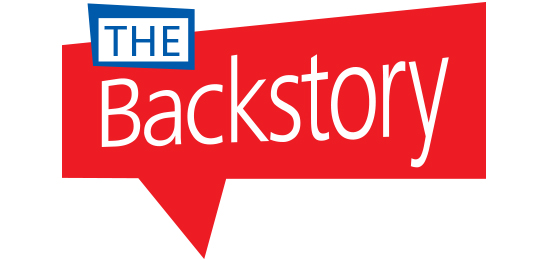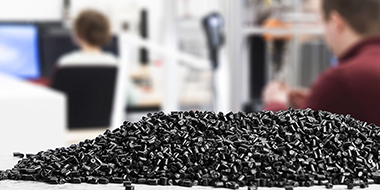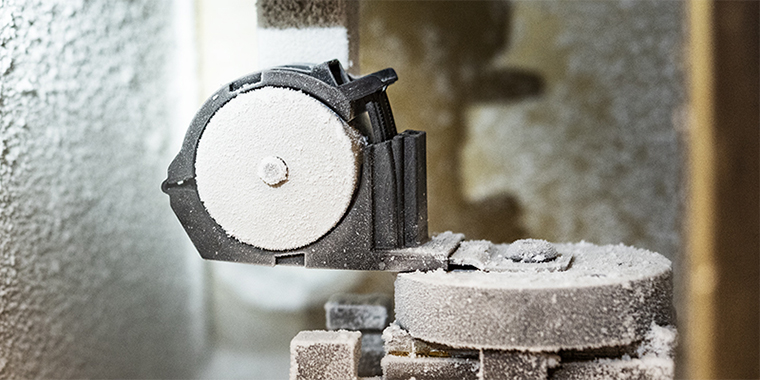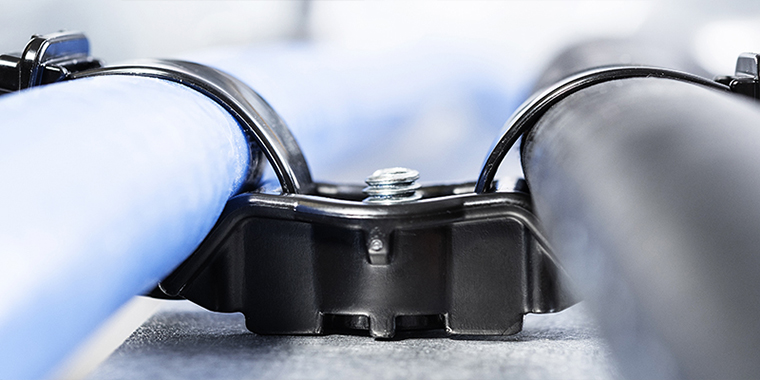How to Engage Factory Employees in Your Wellness Program


How to Engage Factory Employees in Your Wellness Program
By Mike Spanjar, marketing copywriter
It’s tough to get your press operators to try yoga. It’s next to impossible to get your tooling folks interested in a two-month fitness challenge. And who’s going to take assemblers off the line to participate in 30 minutes of meditation?
Take it from me, you can boost your manufacturing team’s well-being. And it pays off, too.

Who am I? I’m the marketing writer at the U.S. headquarters of a global plastics manufacturer. I’m also the wellness program co-chair for about 1,000 of our employees.
Weird, right? I’m not a nutritionist, nurse or physical trainer. I’m just a regular guy who’s enthusiastic about wellness.
I grew up with a healthy cycling obsession. Life got in the way, I let my good habits slip for several years (okay, a couple decades) and I grew a conspicuous, Midwest potbelly in the process.
Now, in my mid-50s, I exercise regularly, pay attention to “my numbers” and love contributing to the health of my coworkers – including those in manufacturing.
Here’s how.
Manufacturing Staff Want to Be Healthy, Too
Just ask them. Two years ago, my wellness co-chair and I decided to interview a cross section of our factory workers. We talked with men and women of varying ages, with different cultural and racial backgrounds, from all three shifts.
Don’t skip this step. Whether you are starting a new program or attempting to expand an existing one, real feedback is essential. Never assume you know what’s best for them. I’ll type that again: Never assume you know what’s best for them.
I’m a desk jockey. I don’t know what it’s like standing in a production cell for hours each day (except for that one time when a bunch of us white collars got the opportunity to work the presses for a day).
Ask your manufacturing folks about their interest in being healthy. Do they have free time? Do they like walking? What’s their diet like? Ask if they have a computer and email address (to receive company communications and stream programs they can’t attend during working hours – think second and third shift).
Our hard-working plant workers are probably like most. While many don’t prioritize exercise or healthy eating, a good number admitted they want to be healthy. They were aware of family histories and wanted to live longer than Uncle Jack. They wanted healthier food items in the break room. They found motivation in others who were healthy.
And when we mentioned that the company would pay them bonuses as they climb through the levels in our wellness program, the light came on.
They Don’t Know Anything About It
You think our factory employees know about the company wellness program? I was shocked by what I learned from our interviews.
When asked if they could name any of the activities we currently track on our “wellness scorecard,” most manufacturing employees clearly guessed at the answers. Our team mistakenly believed they saw our wellness invitations on SharePoint. Most admitted they don’t read messages outside their work responsibilities.
I remember glancing at my wellness co-chair while we were conducting the interviews. She looked as dumbfounded as me.
The most significant barrier to participation in our company wellness program, it turned out, was lack of awareness. Plant staff either didn’t know about the wellness program or didn’t think they were eligible. They had no idea how to sign up. And the events mostly occurred during first shift. How could nighttime workers participate?
Some people admitted they were just too lazy, or – not ironically – felt too tired.
If You Don’t Believe, Why Should They?
Workers see their supervisors as role models. Our survey revealed they were aware of leadership coming to work with unhealthy foods and sodas. They saw who took smoke breaks. These negative behaviors coming from their leaders were deflating.
But they also knew of the ones who were making good choices and had quit smoking. They saw this as inspiring.
So, start at the top. Your management needs to be on board. Ask them to model good behaviors.
They also need to “talk up” the wellness program regularly. Use shift meetings for this. We have a subcommittee whose responsibilities include communicating with leaders at the plant.
Who Runs the Wellness Program at a Manufacturing Company?
Do you need a dedicated wellness guru? No.
Like I said, I’m a copywriter. My co-chair is an executive assistant. Neither of us is a wellness professional. But we’re both passionate about wellness and committed to doing the necessary work – and there’s a good amount of it. So, choose your leaders wisely.
We have monthly committee meetings. The team is made up of folks from multiple departments including marketing, administration, sales, HR, production, engineering and customer service. This helps add to the perspectives guiding our activities and enables us to split up the work.
Plus, if it were solely up to me, every wellness activity would have something to do with cycling. Kidding!
We also team up with a healthcare company that’s invaluable for providing guidance, tools and program support materials. Our rep is always there for us – and she has let us know we’ve got one of the most robust programs in town. Yes, I’m bragging, but I’m almost positive I remember her saying that.
It takes a village, so don’t try to drop the entire program into the lap of your receptionist or HR intern and expect measurable results.
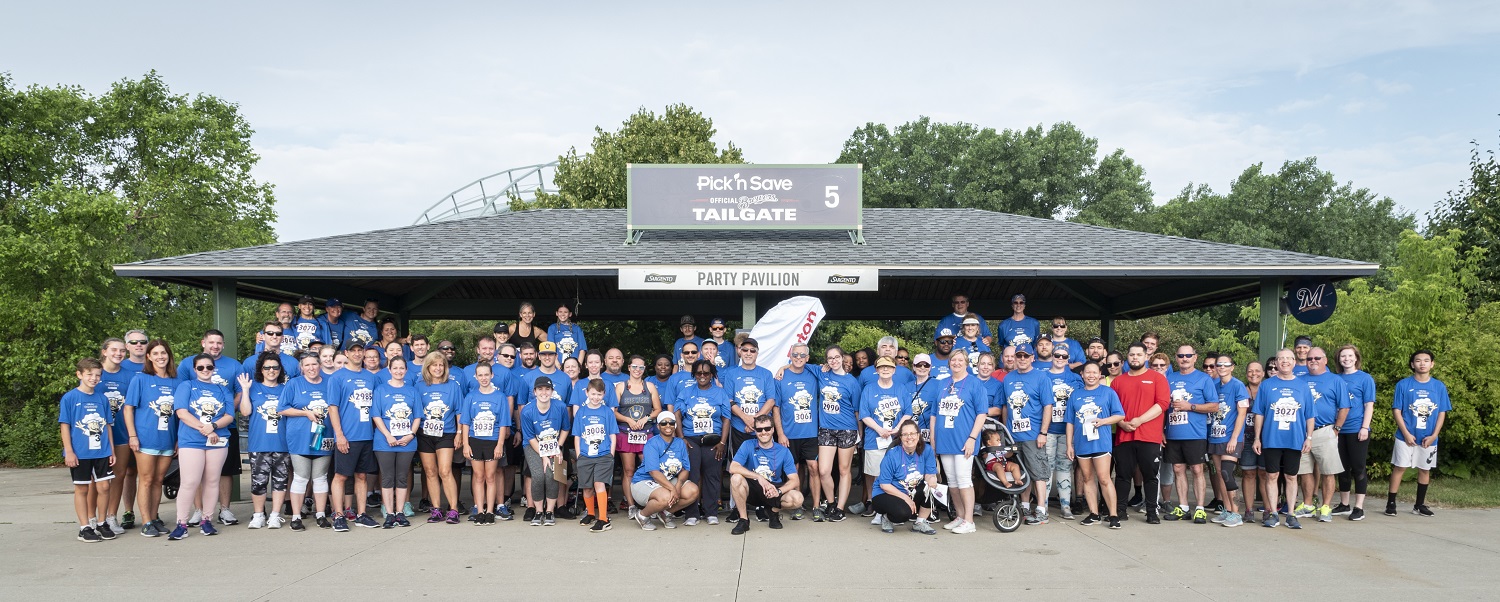
HellermannTyton has had the top team attendance multiple years in a row for the Miller 5k Run/Walk
What Does a Manufacturer’s Company Wellness Program Look Like?
Funny you should ask – I was just getting to that.
With such a wide variety of people types, we like to choose programs that practically anyone can participate in. We mix in the fun wherever we can, and have individual challenges and group competitions here and there (not all the time – some people hate being competitive). Most of all, participants should come away with something positive.
Do people need incentives to do something that’s good for them? Yes!
Our wellness program awards points for activities. Points are tracked on an online scorecard. Longer challenges get more points than quick activities. Points correspond to a tier system – bronze, silver and gold – and there’s a reason to go for the gold; each tier is worth money on our paychecks.
Activities include weight-loss challenges; building healthy eating habits, grocery shopping and cooking; meditation and positive thinking; walking, biking and running events and more.
Mental health topics cover everything from relaxation to financial planning.
Many doctor visits are point-worthy. Volunteering earns points, too.
Our company covers the cost for employees to participate in community charity events. I especially enjoy many of the walks and bike rides for American Heart Association, American Diabetes Association and local causes. Employees do their part by fundraising throughout the year.
We subsidize gym memberships, provide fitness band reimbursements and offer other perks to encourage full immersion in a healthy lifestyle.
Wash, Rinse, Repeat
Consistency is the mother of program success. Having regularly scheduled programs boosts awareness and legitimacy.
One way to do this: Wellness Wednesday – a wellness topic over lunch once a week. We invite an employee to run these whenever possible. This builds engagement, and many employees love sharing what they are passionate about.
Have events, activities, presentations, etc. scheduled throughout the year. Don’t worry about having literally every wellness activity determined for the next 12 months. The big ones should be planned out early, though.
Themes help generate topics and keep things interesting. We have quarterly themes … eating right, movement, mental health … you get the idea.

You’ve Built It – Will They Come?
Hopefully you’re already envisioning how awesome your wellness program will look. The key, as I made clear earlier (but it was a long time ago – holy cow, will this guy land the plane already?) is promoting it.
People need to see it multiple times, in different places, and hear about it from shift leaders, and take home a handout, and … just advertise like crazy. It’s almost impossible to over promote.
Whenever we broadcast an event that requires sign-ups, there’s great response when the initial communication goes out. There’s also significant response two weeks later when we send out a reminder.
Okay, that’s it. You’re all set to launch a successful wellness program for your office staff and – just as important – your factory employees.
Here’s to a healthy start!

About the Author:
Mike Spanjar is HellermannTyton’s marketing copywriter. Having written advertising and marketing copy for over 30 years, he brought his industrial writing experience to HellermannTyton in January 2017. An old-school marketer, Mike still believes in delivering value in his work. That means having a never-ending passion for honing his craft through articles and workshops. Mike brings our latest products to life in all forms of deliverables and supports myriad internal projects. In his free time, he enjoys bicycling and spinning, DIY home projects and spending quality time with family. Mike plays keyboard in a classic rock cover band because he’s getting old and clinging to his glory days.

